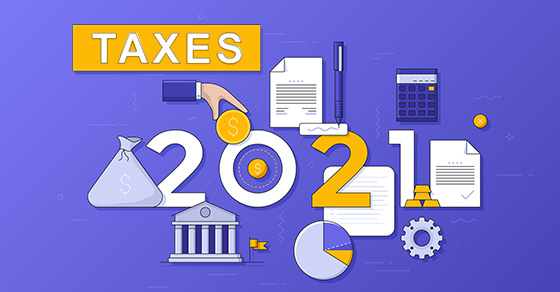
Many homeowners across the country have seen their home values increase recently. According to the National Association of Realtors, the median price of homes sold in July of 2021 rose 17.8% over July of 2020. The median home price was $411,200 in the Northeast, $275,300 in the Midwest, $305,200 in the South and $508,300 in the West.
Be aware of the tax implications if you’re selling your home or you sold one in 2021. You may owe capital gains tax and net investment income tax (NIIT).
Gain exclusion
If you’re selling your principal residence, and meet certain requirements, you can exclude from tax up to $250,000 ($500,000 for joint filers) of gain.
To qualify for the exclusion, you must meet these tests:
- You must have owned the property for at least two years during the five-year period ending on the sale date.
- You must have used the property as a principal residence for at least two years during the five-year period. (Periods of ownership and use don’t need to overlap.)
In addition, you can’t use the exclusion more than once every two years.
Gain above the exclusion amount
What if you have more than $250,000/$500,000 of profit? Any gain that doesn’t qualify for the exclusion generally will be taxed at your long-term capital gains rate, provided you owned the home for at least a year. If you didn’t, the gain will be considered short term and subject to your ordinary-income rate, which could be more than double your long-term rate.
If you’re selling a second home (such as a vacation home), it isn’t eligible for the gain exclusion. But if it qualifies as a rental property, it can be considered a business asset, and you may be able to defer tax on any gains through an installment sale or a Section 1031 like-kind exchange. In addition, you may be able to deduct a loss.
The NIIT
How does the 3.8% NIIT apply to home sales? If you sell your main home, and you qualify to exclude up to $250,000/$500,000 of gain, the excluded gain isn’t subject to the NIIT.
However, gain that exceeds the exclusion limit is subject to the tax if your adjusted gross income is over a certain amount. Gain from the sale of a vacation home or other second residence, which doesn’t qualify for the exclusion, is also subject to the NIIT.
The NIIT applies only if your modified adjusted gross income (MAGI) exceeds: $250,000 for married taxpayers filing jointly and surviving spouses; $125,000 for married taxpayers filing separately; and $200,000 for unmarried taxpayers and heads of household.
Two other tax considerations
- Keep track of your basis. To support an accurate tax basis, be sure to maintain complete records, including information about your original cost and subsequent improvements, reduced by any casualty losses and depreciation claimed for business use.
- You can’t deduct a loss. If you sell your principal residence at a loss, it generally isn’t deductible. But if a portion of your home is rented out or used exclusively for business, the loss attributable to that part may be deductible.
As you can see, depending on your home sale profit and your income, some or all of the gain may be tax-free. But for higher-income people with pricey homes, there may be a tax bill. We can help you plan ahead to minimize taxes and answer any questions you have about home sales.






